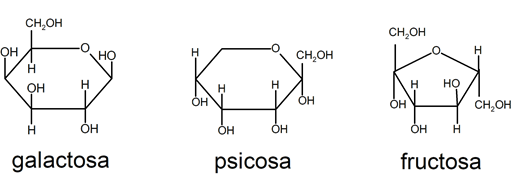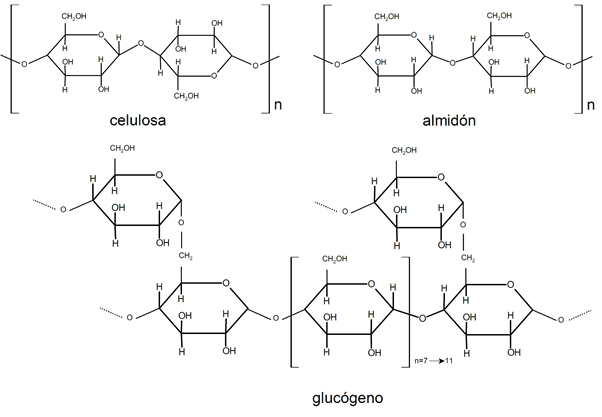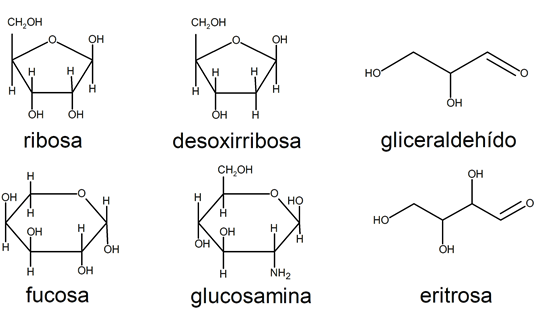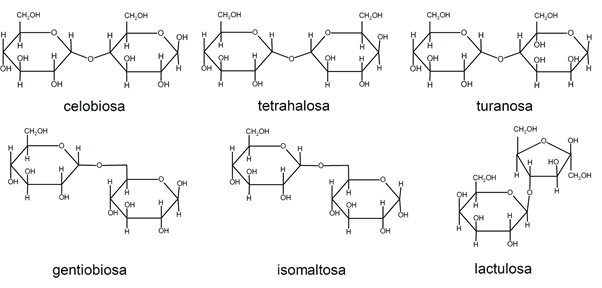The word “Saccharide” comes from the Greek and means “sugar“, and it is used in biochemistry to refer to a set of molecules essential for life, given their functions as structural agents and energy containers.
Monosaccharides, also called simple carbohydrates, carbohydrates or carbohydrates, are made up of carbon atoms, hydrogen and to a lesser extent oxygen, although they can also contain nitrogen, sulfur or phosphorus. On the other hand, polysaccharides are carbohydrates composed of combinations of several monosaccharide molecules.
Thus, in general, these biomolecules can be classified according to the amount of monosaccharides they present in:
- Monosaccharides. Composed of a simple sugar molecule. For instance: fructose, galactose, psychosa.

- Disaccharides. Made up of two monosaccharide molecules joined together. For instance: sucrose, lactose, maltose.

- Polysaccharides. Composed of chains of varying complexity that are made up of multiple sugar molecules. For instance: cellulose, starch, glycogen.

Examples of monosaccharides
- Glucose. Composed of six carbon atoms, twelve hydrogen and six oxygen, it is found in the free state in fruits and honey. It is the basic energetic substance of life.
- Ribose. Pentose (five carbon atoms) vital for the synthesis of essential organic substances such as RNA or even ATP, which is why it is vital in the reproductive and energetic circuits.
- Deoxyribose. By losing an oxygen atom in one of its hydroxyl, ribose becomes a deoxysugar like fucose or rhamnose, and that is when it can constitute part of the nucleotides of DNA.
- Fructose. Coming from fruits and vegetables, it maintains an isomeric relationship with glucose (same components ordered differently).
- Glyceraldehyde. Composed of three carbon atoms, it is one of the first sugars obtained in photosynthesis and an intermediate step in numerous metabolic cycles (glycolysis).
- Galactose. Sugar with six carbon atoms, which together with glucose make up lactose and give it all its nutritional and energy potential.
- Eritrosa. Very soluble monosaccharide with a syrupy appearance, endowed with four carbons and an aldehyde group (formyl). It is present in the photosynthesis cycle.
- Fucosa. Essential for the synthesis of fucoidin, it is present in the surface cells of mammals, insects and plants.
- Glucosamine. The most abundant monosaccharide of all, it is an amino-sugar present in the cell wall of fungi and in the chitinous coatings of arthropods.
- Psycho. With six carbon atoms and a ketone group, it is a very rare sugar in nature.

Examples of disaccharides
- Saccharose. Table sugar is an intermediate product of photosynthesis, composed of fructose and glucose, synthesized only by plants. It is the main sweetener for human consumption.
- Lactose. Resulting from the binding of glucose and galactose, it is secreted in the mammary glands of mammals to feed their offspring and is fermented by lactic acid bacteria during the making of cheese or yogurt.
- Maltose. Known as malt sugar, it contains a high glycemic load and appears naturally in germinating barley grains, as well as beer and other derivatives of this cereal.
- Cellobiose. Disaccharide composed of two glucose molecules, appears during the hydrolysis of cellulose and is characterized by being a reducing agent.
- Trehalose. Double sugar present in mushrooms and mushrooms, as well as the hemolymph (circulatory fluid of insects, its analog in vertebrates is blood) of insects. You can suffer from intolerance to this sugar, from lacking the enzyme trehalase.
- Isomalt. Also present in the germination of barley, it is composed by the union of two glucoses and is obtained by hydrolysis of starches, for use as a sweetener together with other sugars.
- Gentiobiosa. Solid and white sugar, soluble in water or hot water, composed of two D-glucoses, and is found in many seeds and nuts.
- Lactulose. Union of fructose and galactose, it is a synthetic yellow sugar, used against constipation and hepatic encephalopathy.
- Turanose. Sucrose analog not metabolizable by higher plants.
- Leucrose. A structural isomer of sucrose from hydrolysis of glucose and fructose, it is a very rare double sugar in nature.

Examples of polysaccharides
- Cellulose. The most abundant biopolymer in the world, it is composed of glucose bonds that allow it to form dense fibers, of which the cell walls of plants and vegetables are made up. It is found in wood and especially in cotton (in its pure state).
- Starch. It is a polysaccharide macromolecule and one of the foods most ingested by man from plants.
- Glycogen. Made up of glucose chains, it is the main energy reserve polysaccharide of animals, housed in the muscles and to a lesser extent in the liver. It is reduced to glucose by hydrolysis in situations of energy need.
- Chitin. Nitrogen-rich polysaccharide, present in the structure of fungi and arthropod exoskeletons. It is the most abundant natural polymer in the world after cellulose.
- Agar or agar-agar. Sulfated polysaccharide present in sargassum and brown algae, has certain medicinal uses for man.
- Xylan. Another very abundant polysaccharide, acts as a plant support and storage substance, especially as hemicellulose.
- Peptidoglycan. Known as murein, it is a very resistant copolymer, which guarantees the cellular structure in numerous bacteria.
- Fructosan. It is a polymer formed by fructose molecules, present in plants, fungi and bacteria.
- Heparin. Anticoagulant present in the blood and circulatory tissues, it is a sulfated polysaccharide widely used in medicine.





